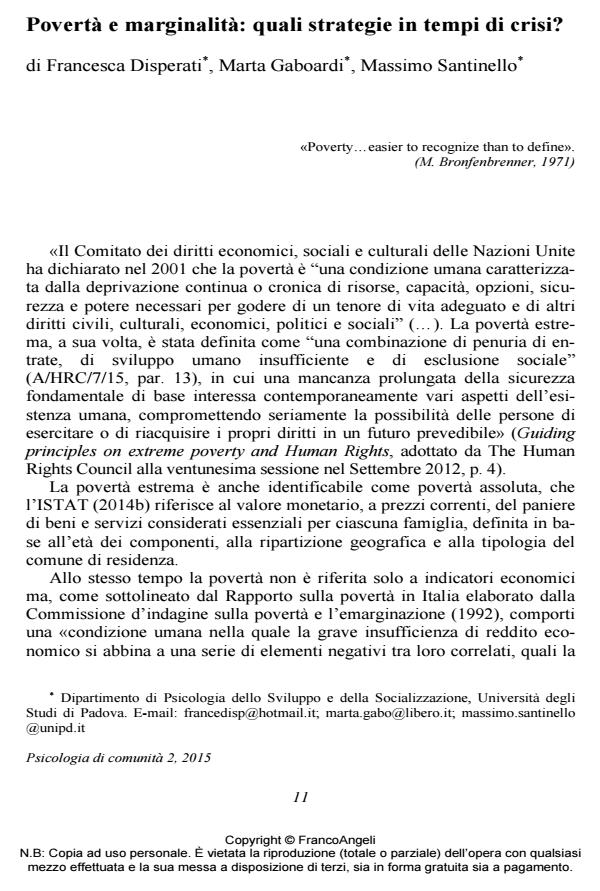Poverty and marginalization: what strategies in times of crisis?
Journal title PSICOLOGIA DI COMUNITA’
Author/s Francesca Disperati, Marta Gaboardi, Massimo Santinello
Publishing Year 2015 Issue 2015/2
Language Italian Pages 12 P. 11-22 File size 51 KB
DOI 10.3280/PSC2015-002002
DOI is like a bar code for intellectual property: to have more infomation
click here
Below, you can see the article first page
If you want to buy this article in PDF format, you can do it, following the instructions to buy download credits

FrancoAngeli is member of Publishers International Linking Association, Inc (PILA), a not-for-profit association which run the CrossRef service enabling links to and from online scholarly content.
This article presents different definitions of poverty and the conceptual and empirical challenges of estimating the effects of poverty on mental health. In addition, we introduce the topic of extreme marginalization, with particular reference to homeless people. The article illustrates strategies to reduce poverty and the implications of these strategies for prevention and community-based programs.
Keywords: Poverty, extreme marginality, community-based programs
- Uno studio di caso sui senza dimora: profili, caratteristiche e interazione fra le problematiche Francesco Balducci, Tatiana Saruis, in SOCIOLOGIA E POLITICHE SOCIALI 2/2017 pp.141
DOI: 10.3280/SP2017-002008
Francesca Disperati, Marta Gaboardi, Massimo Santinello, Povertà e marginalità: quali strategie in tempi di crisi? in "PSICOLOGIA DI COMUNITA’" 2/2015, pp 11-22, DOI: 10.3280/PSC2015-002002